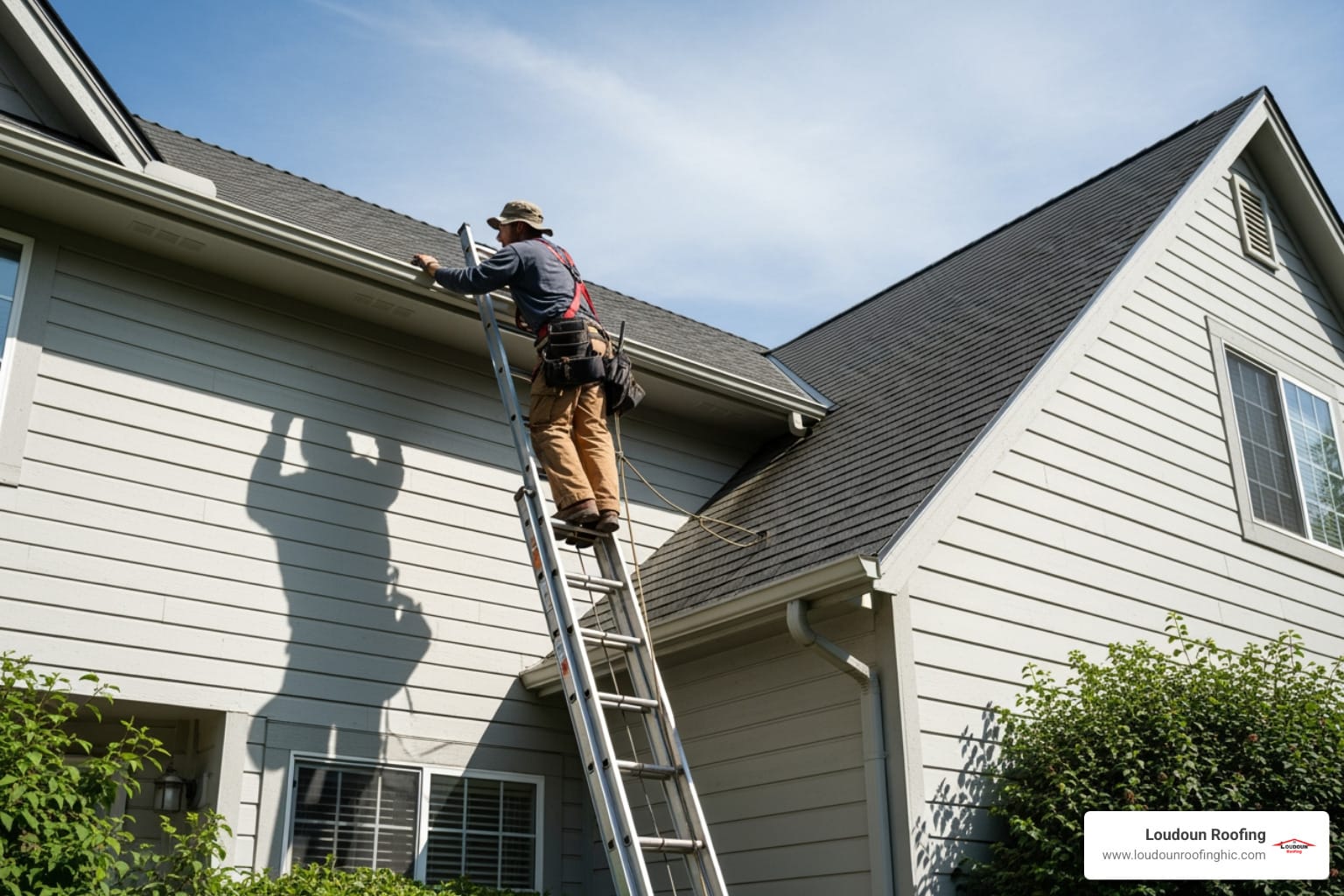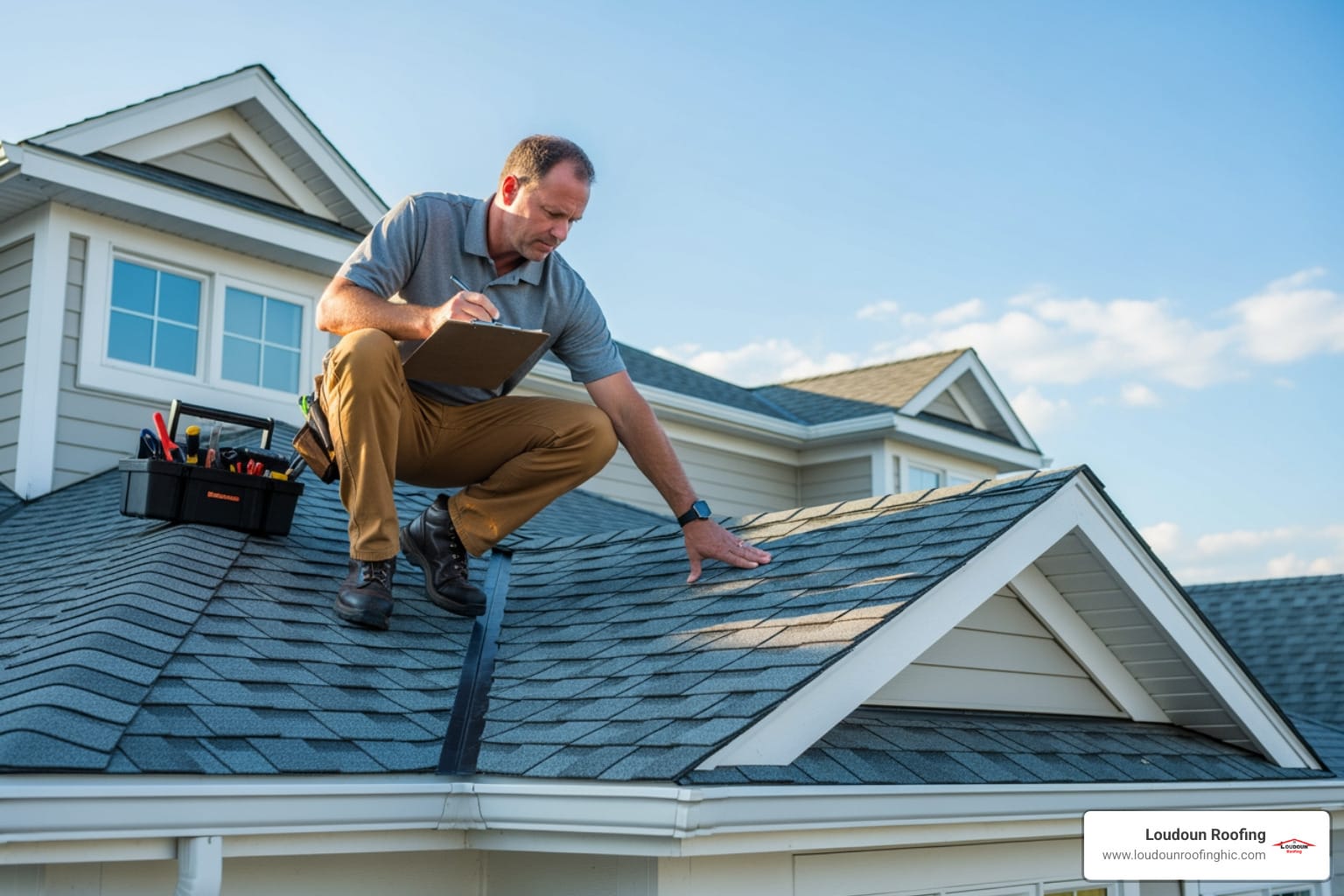Your Roof’s Essential Health Check
How often should you inspect your roof is a question that could save you thousands in repairs. Your roof works 24/7 to protect your home, and regular check-ups are vital to catch problems before they become disasters. If you want expert guidance right away, our Northern Virginia roofing experts are ready to help.
Quick Answer – Roof Inspection Frequency:
- New roofs (0-5 years): Every 2 years
- Mid-age roofs (5-15 years): Annually
- Older roofs (15+ years): Twice per year
- After major storms: Immediately
- Flat roofs: Every 6 months to 1 year
The National Roofing Contractors Association recommends homeowners inspect their roofs twice a year. Most professionals agree that an inspection at least every two years is essential for maintaining your home’s protection.
Roof inspections are like an oil change for your caressential for keeping it in good shape and preventing major issues.
For Northern Virginia homeowners, regular professional roof inspections are especially important given our area’s severe weather. As your trusted local roofing partner, Loudoun Roofing provides expert roofing services to help you protect your investment.
I’m Esteban Marin, owner of Loudoun Roofing. With 23 years of experience since 2001, I’ve seen that understanding how often should you inspect your roof can prevent a simple repair from becoming a complete replacement. Proactive maintenance is key to protecting your investment.
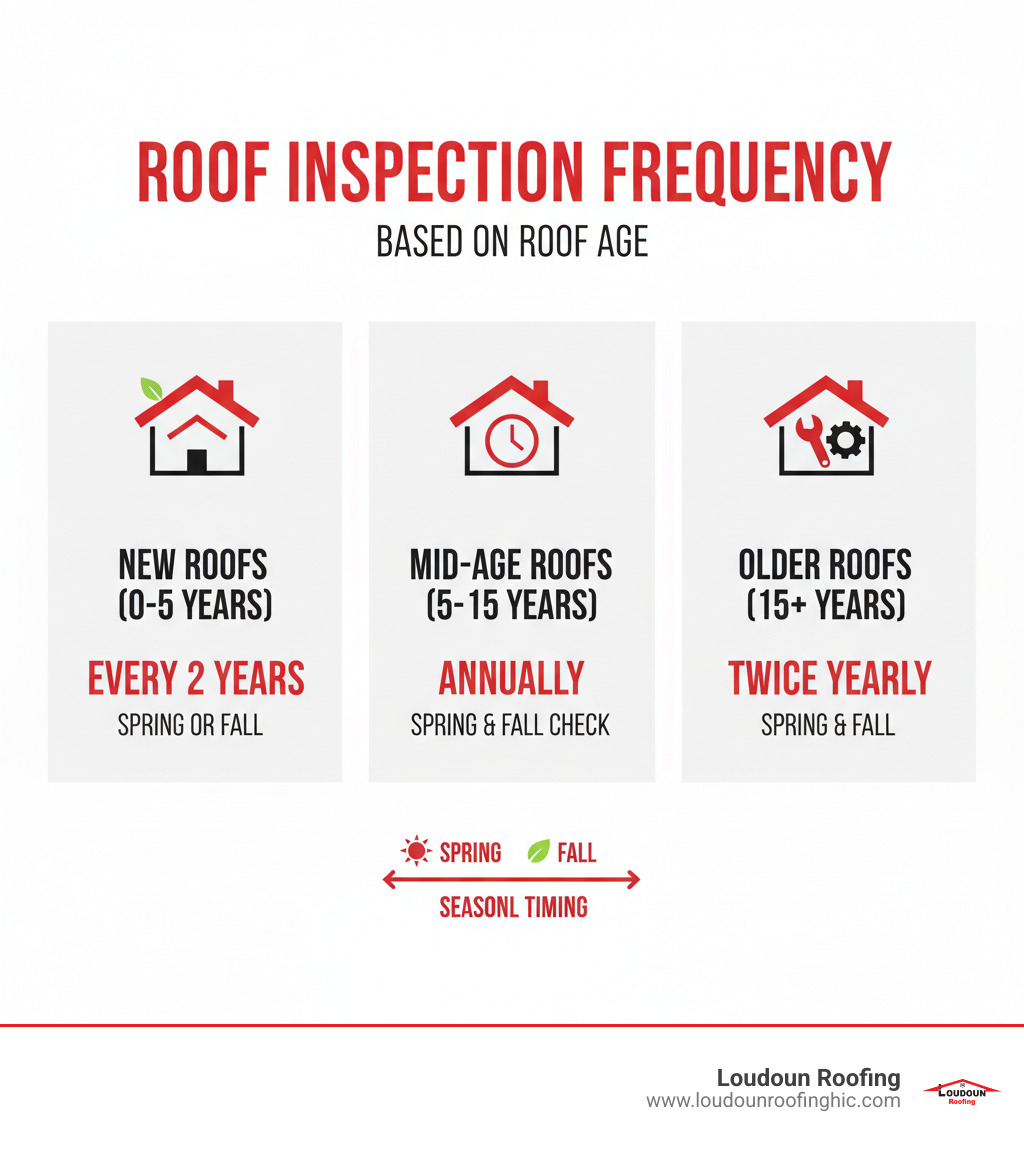
The General Rule: How Often Should You Inspect Your Roof?
Just as your doctor recommends annual check-ups, your roof needs preventive care to catch small problems before they become costly disasters.
How often should you inspect your roof? The answer depends on your roof’s age and condition, but there’s a solid baseline to follow. The National Roofing Contractors Association recommends twice-yearly inspections for most homes. It’s a proven strategy for proactive maintenance that provides peace of mind and prevents major repairs.
Catching minor issues early through regular inspections is far less expensive than emergency repairs. Staying on top of your roof’s health protects one of your home’s most vital systems.
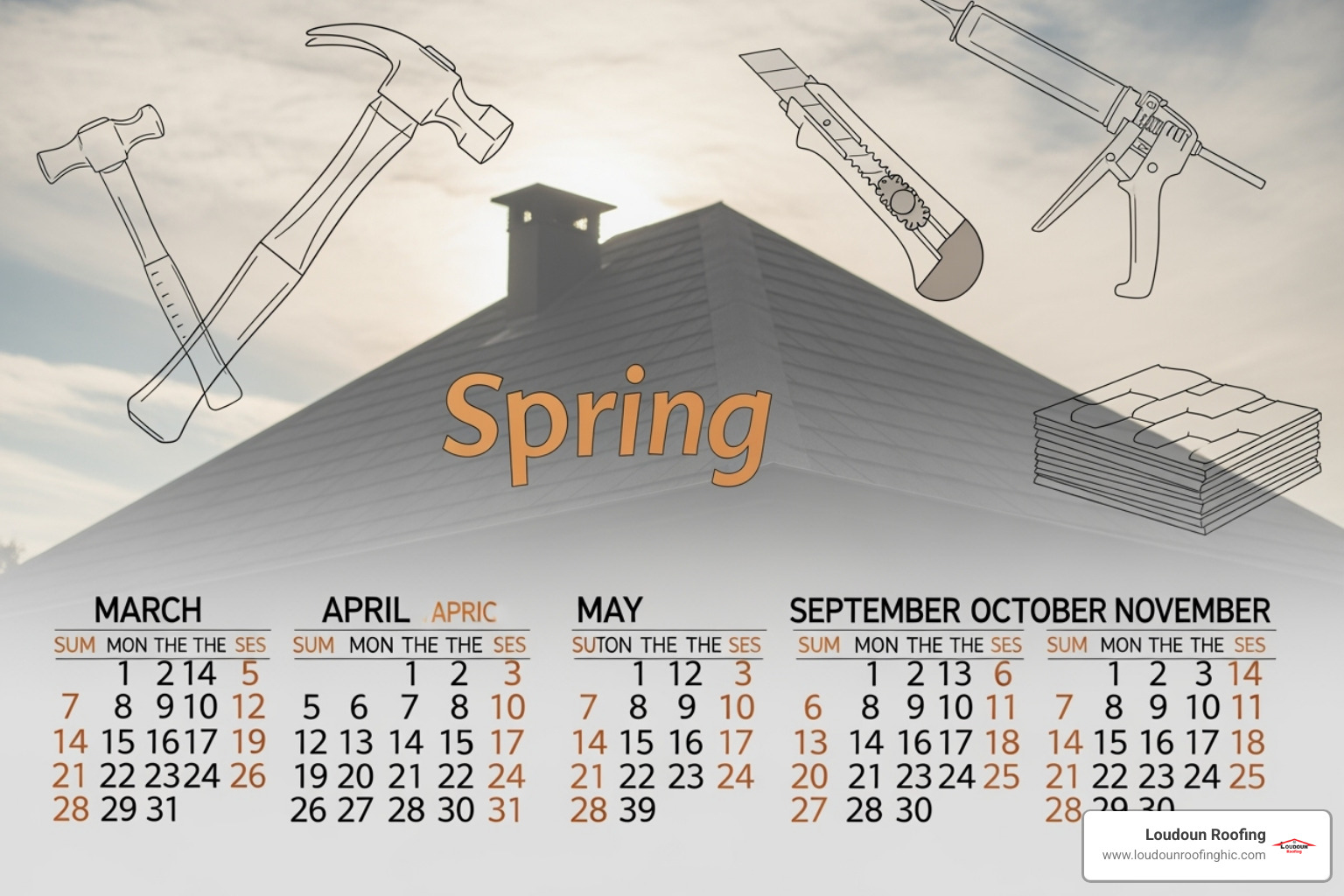
The Baseline: Annual to Bi-Annual Inspections
If you have a newer roof that was properly installed, inspections every two years may suffice. However, even new roofs can develop issues from poor installation or severe weather.
For most homeowners, annual inspections are ideal. This yearly check-up establishes a baseline for your roof’s condition and spots developing problems early.
Once your roof hits the 15-year mark, twice-a-year inspections become essential. Older roofs are more vulnerable, and this frequency helps catch minor issues early—like a loose shingle—before they let water into your home.
When is the Best Time of Year for a Roof Inspection?
Timing your inspections correctly helps catch problems when they’re still manageable.
Spring inspections serve as a post-winter recovery check-up. Northern Virginia winters are brutal on roofs, with snow, ice dams, and freeze-thaw cycles causing damage. A post-winter damage assessment in spring allows time for repairs before the pre-summer storm season.
Fall inspections prepare your roof for the challenges ahead. In the fall, clear debris from gutters to prevent water backup. A thorough check-up focuses on preparing for snow and ice by identifying weak spots.
Key Factors That Influence Inspection Frequency
When homeowners ask how often should you inspect your roof, the answer isn’t simple. Every roof is different; some are more vulnerable and require more frequent checks.
The main factors are your roof’s age, local climate, roofing material, and surrounding environment. Understanding these helps create a personalized maintenance plan that keeps your roof in peak condition.
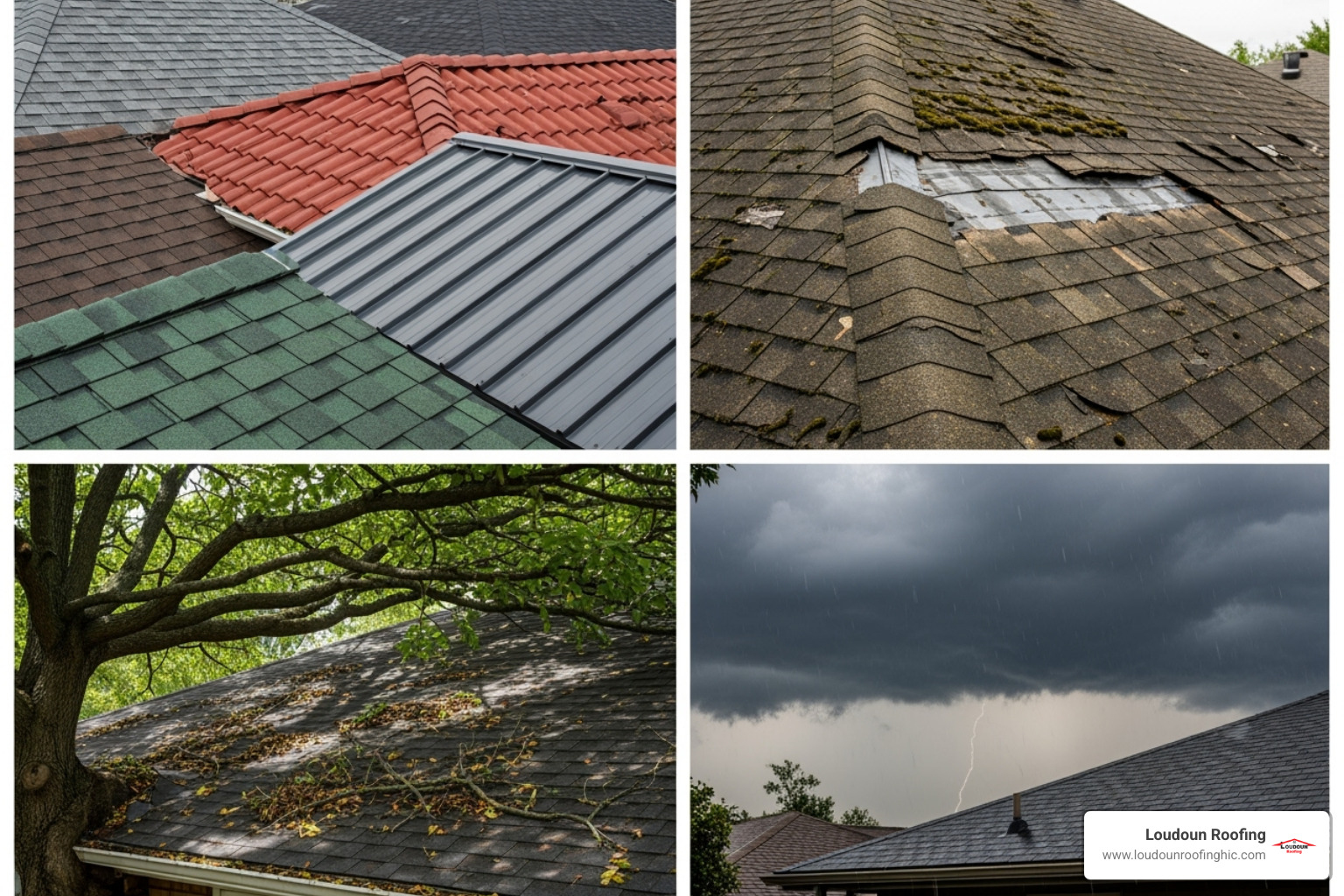
How the Age of Your Roof Affects Inspection Needs
Your roof’s age is the biggest factor in determining inspection frequency.
- New roofs (0-5 years): Strong and resilient. If properly installed, inspections every 2-4 years are usually sufficient to check installation quality and for early manufacturing defects.
- Mid-life roofs (5-15 years): Start showing wear. Annual inspections become crucial to catch small issues like loose shingles or minor flashing problems early.
- Older roofs (15+ years): Need the most attention, requiring twice-yearly inspections due to increased vulnerability. If your roof is aging, get a free roof estimate to understand your options.
How Weather and Climate Impact Your Roof
Northern Virginia’s varied climate—from hot summers to icy winters—impacts how often you should inspect your roof.
Post-storm inspections are non-negotiable. After any major weather event like high winds, hail, heavy rain, or snow and ice, your roof needs immediate attention. Hidden damage can quickly become expensive. Given our diverse Leesburg, VA weather patterns, we often recommend more frequent inspections. Our Storm Damage Assessment services can help document any weather-related issues.
How Your Roofing Material Changes the Schedule
Different roofing materials have different maintenance needs, which directly impacts how often should you inspect your roof.
| Roofing Material | Recommended Inspection Frequency | Typical Lifespan |
|---|---|---|
| Flat Roofs | Every 6 months – 1 year | 10-20 years |
| Asphalt Shingles | Every 1-2 years | 20-30 years |
| Tile Roofs | Every 2-3 years | 50+ years |
| Metal Roofs | Every 3-5 years | 40-70 years |
- Flat roofs need the most frequent attention, with 6-month to 1-year inspections essential for preventing leaks.
- Asphalt shingle roofs are the most common and need annual to bi-annual check-ups to watch for curling, cracking, and granule loss.
- Tile roofs last 50+ years and typically only need inspections every 2-3 years. Our Tile Roof Replacement Guide has more details.
- Metal roofing is incredibly durable and usually only needs inspections every 3-5 years.
Warning Signs: When to Call for an Immediate Inspection
While regular inspections are important, your roof can develop problems at any time. Recognizing distress signals can prevent a minor leak from becoming a major disaster.
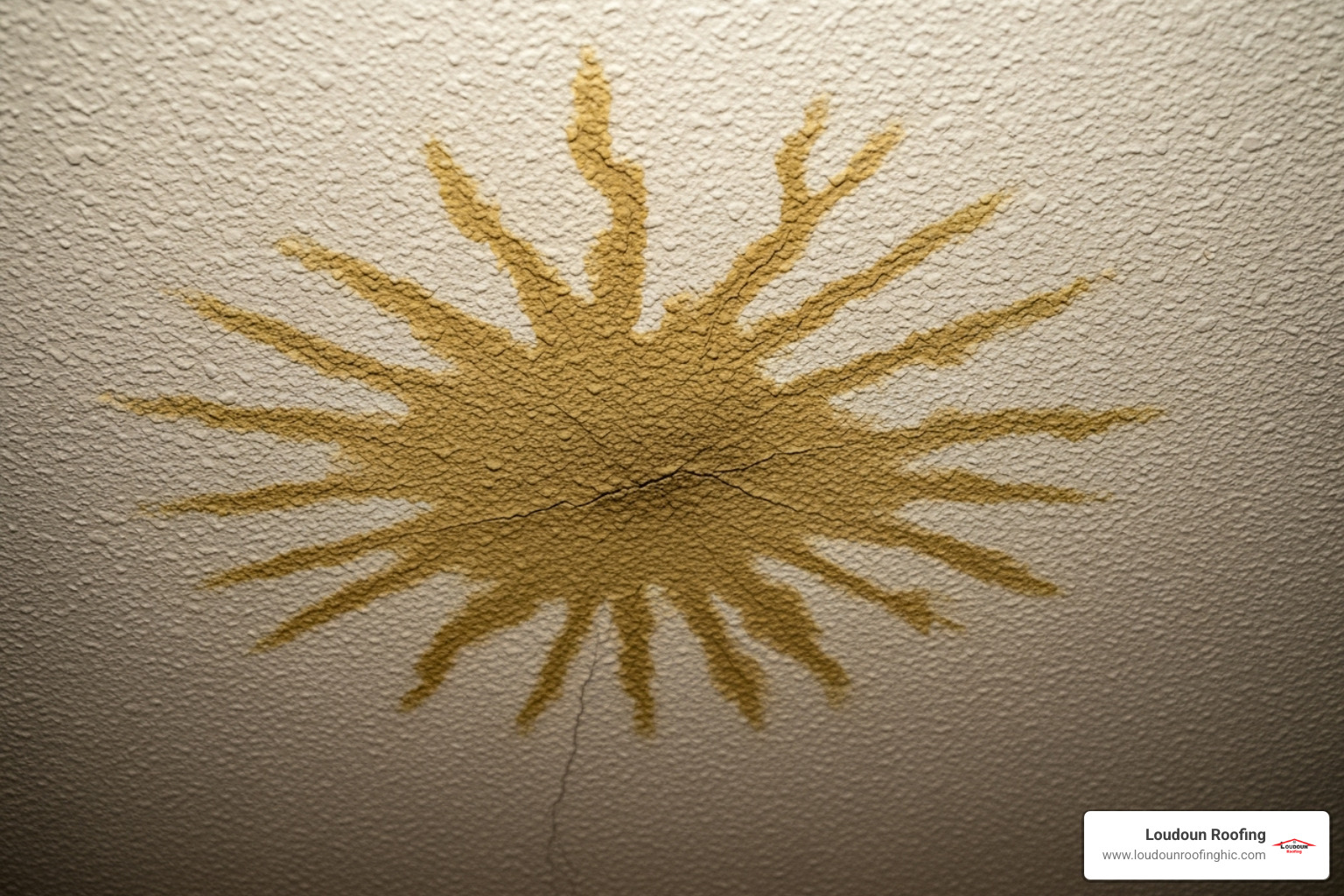
When you spot the warning signs below, getting a professional inspection immediately is crucial. The question of how often should you inspect your roof becomes secondary to addressing an urgent problem.
Interior Signs of Roof Damage
Your home’s interior often reveals roof problems first. Don’t ignore these indoor warning signs.
- Water stains on ceilings or walls: A classic sign of a leak. Even small discolorations or bubbling paint mean water is getting in.
- Peeling paint near the roofline: This indicates moisture seeping into walls or the attic, especially on upper floors.
- Attic moisture or mold: A damp feel, musty smell, or visible mold on rafters requires immediate attention.
- Sagging ceilings: This indicates a potentially severe structural compromise requiring Emergency Roof Repair.
- Unexplained drafts: Drafts from your ceiling can signal gaps or damage in your roof’s structure.
Exterior Signs of Roof Damage
A walk around your home can reveal exterior warning signs. Looking up can show you a lot about your roof’s condition.
- Curling, cracked, or missing shingles: These are common signs of an aging or damaged roof.
- Buckling or blistering shingles: A wavy appearance often indicates underlying moisture problems.
- Shingle granule loss: For asphalt shingles, bald spots or granules in gutters mean your roof is losing its protective layer.
- Damaged flashing: Damaged flashing around vents or chimneys creates a direct path for water into your home.
- Clogged gutters: These can cause water to back up, damaging your roof edge or creating ice dams. Regular Roof and Gutter Repair prevents this.
- Algae or moss growth: Extensive growth can indicate trapped moisture and deteriorating shingles.
What to Expect from a Professional Roof Inspection
A professional roof inspection is a comprehensive health check-up for your roof. Our Certified Roof Inspections in McLean, VA follow a meticulous process for your peace of mind.
Our process includes a thorough visual assessment of the roof surface, an inspection of all components like flashing and gutters, a structural integrity evaluation, and an attic and interior assessment. Afterward, you’ll receive a detailed report with photos and honest recommendations.
The Benefits of Using Drone Technology for Roof Inspections
We use cutting-edge drone technology to provide a safer, more accurate, and comprehensive inspection.
- Improved safety: Drones eliminate the need to climb on potentially dangerous roofs.
- High-definition imagery: Drones capture crystal-clear images, revealing subtle issues not visible from the ground.
- Damage documentation for insurance: We provide high-quality photo and video evidence crucial for a successful claim.
- Tracking roof health over time: By creating a baseline, we can monitor changes, identify hard-to-see issues early, and anticipate future needs.
The Dangers of Neglecting Your Roof
Neglecting inspections turns small issues into expensive disasters.
- Minor leaks turn into major problems: A small drip can escalate to extensive water damage.
- Structural damage: Persistent moisture causes wood rot in rafters and decking, leading to costly repairs.
- Mold and mildew growth: Damp environments encourage mold growth, creating health risks.
- Reduced energy efficiency: A damaged roof increases energy bills.
- Premature roof replacement: The ultimate consequence is a costly roof replacement years before it should be necessary.
Many insurance companies require proof of regular maintenance for water damage claims, which are a common business insurance claim that also affects homes. Without proof, your claim might be denied. A small investment in regular inspections can save you thousands.
Frequently Asked Questions about Roof Inspections
Can I inspect my own roof?
While a ground-level visual check is good practice, a thorough inspection requires professional training and safety equipment. Climbing on your roof is dangerous, and you risk missing subtle signs of damage that professionals are trained to spot. For a complete and accurate assessment, it’s best to hire a local roofer.
How much does a professional roof inspection cost?
The cost varies, but many reputable companies, including Loudoun Roofing, offer free inspections and estimates, especially for suspected storm damage. A paid inspection is a small upfront cost that can save you thousands in future repairs by catching problems early.
Will a roof inspection affect my insurance?
Regular roof inspections can be beneficial for your homeowner’s insurance. Documenting your roof’s good condition creates a paper trail that helps with future claims. Catching damage early allows for a timely roof insurance claim and can strengthen your claim. Some policies require inspections for coverage, while others may offer discounts. Always check with your insurance provider about their specific requirements.
Protect Your Investment with Regular Roof Inspections
Your roof is your family’s shield. Understanding how often should you inspect your roof and scheduling regular check-ups is one of the smartest investments a homeowner can make. The small cost of an inspection pales in comparison to expensive emergency repairs or a premature replacement.
Being proactive with your roof’s health prevents costly damage, extends its lifespan, maintains home value, and ensures your family’s safety. Regular inspections catch minor issues early, giving you peace of mind.
The bottom line: Regular professional inspections save you money and stress. Whether your roof is new or old, proactive maintenance is always the right choice.
If you’re in Leesburg or anywhere in Northern Virginia and it’s time for your roof’s check-up, you can count on the experienced team at Loudoun Roofing. We’re committed to providing durable, expertly crafted roofing solutions backed by industry-leading warranties and unparalleled customer satisfaction.
Ready to give your roof the attention it deserves? Schedule your professional Roof Inspection online today. Let’s make sure your home stays protected, no matter what the weather brings.



